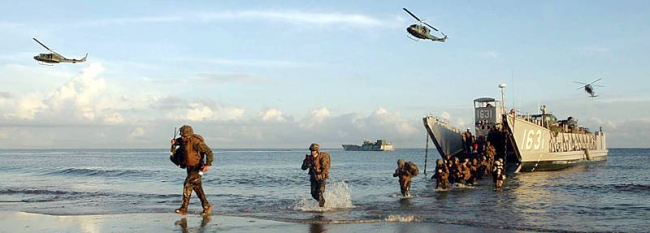WASHINGTON, Aug. 10, 2010 — The efficiency initiatives Defense Secretary Robert M. Gates announced yesterday are just part of a drive that has been moving since the secretary took office, the vice chairman of the Joint Chiefs of Staff said.
Marine Corps Gen. James E. Cartwright said the effort to find efficiencies in the department and to apply the savings to more deserving projects is not a “one-off” activity, but rather will continue.
“We started back in ’08 and ’09 with culling out programs that were not performing and were not contributing to the capabilities that we thought we had to have, either because they were failing on their own or they didn’t match up,” Cartwright said following the secretary’s announcement. “That activity has continued inside the department to ensure that we stay relevant to the wars that we’re in, and that we also start to address the uncertainties and the unforecast activities that may occur in the wars … we will face in the future.”
Much of the discussion has centered on how to change the culture of the massive defense bureaucracy and how such a large organization can stay competitive. The discussions also looked at identifying technologies and capabilities that will be needed in the future.
The Defense Department “requires a culture that is agile, has the capabilities to remain agile and remain competitive,” the general said.
Cartwright spoke alongside Defense Department Comptroller Robert F. Hale and Christine H. Fox, director of the Pentagon’s cost assessment and program evaluation office, and all said they support the secretary’s initiative aimed at reforming the Pentagon and eliminating unnecessary duplicative costs.
Cartwright acknowledged that guessing what capabilities are needed to fight the next war is difficult, if not impossible, and that building a force around those guesses is a recipe for failure. But stressing the need for intelligent and agile-minded personnel will serve the military and the nation, he added.
“I have all too many experiences, from the ’70s forward, of having capabilities that we thought were right for the last war and really turned out not to be what we needed for the next war,” he said. “There is no crystal ball, but there is an understanding that through your people and through the capabilities that you field, you can have the Department of Defense and the national security apparatus relevant for the next conflicts. That’s our objective here.”
Cartwright said the members of the Joint Chiefs of Staff intuitively understand this, and see the secretary’s initiatives as having positive effects on the force.
“Making sure that we keep this organization relevant, competitive, agile for the next-generation conflicts is at the core of this activity,” he said. “Having the resources in the wrong place doesn’t serve any of us well.”
The general acknowledged the decisions are hard and will affect people – most notably those in U.S. Joint Forces Command, the office of the assistant secretary of defense for network integration and the Business Transformation Agency, which Gates will close. “This is a rebalancing to ensure this department remains ready both for today’s conflicts and for the unknowns and ‘unanticipateds’ of the future conflict,” Cartwright said.
Those who think this effort will fizzle out are in for a surprise, the general said.
“Please don’t misread; this is something that we believe is No. 1 on our list,” he said. “This is something that we are going to go after.”
Source:
U.S. Department of Defense
Office of the Assistant Secretary of Defense (Public Affairs)

 von
von 
